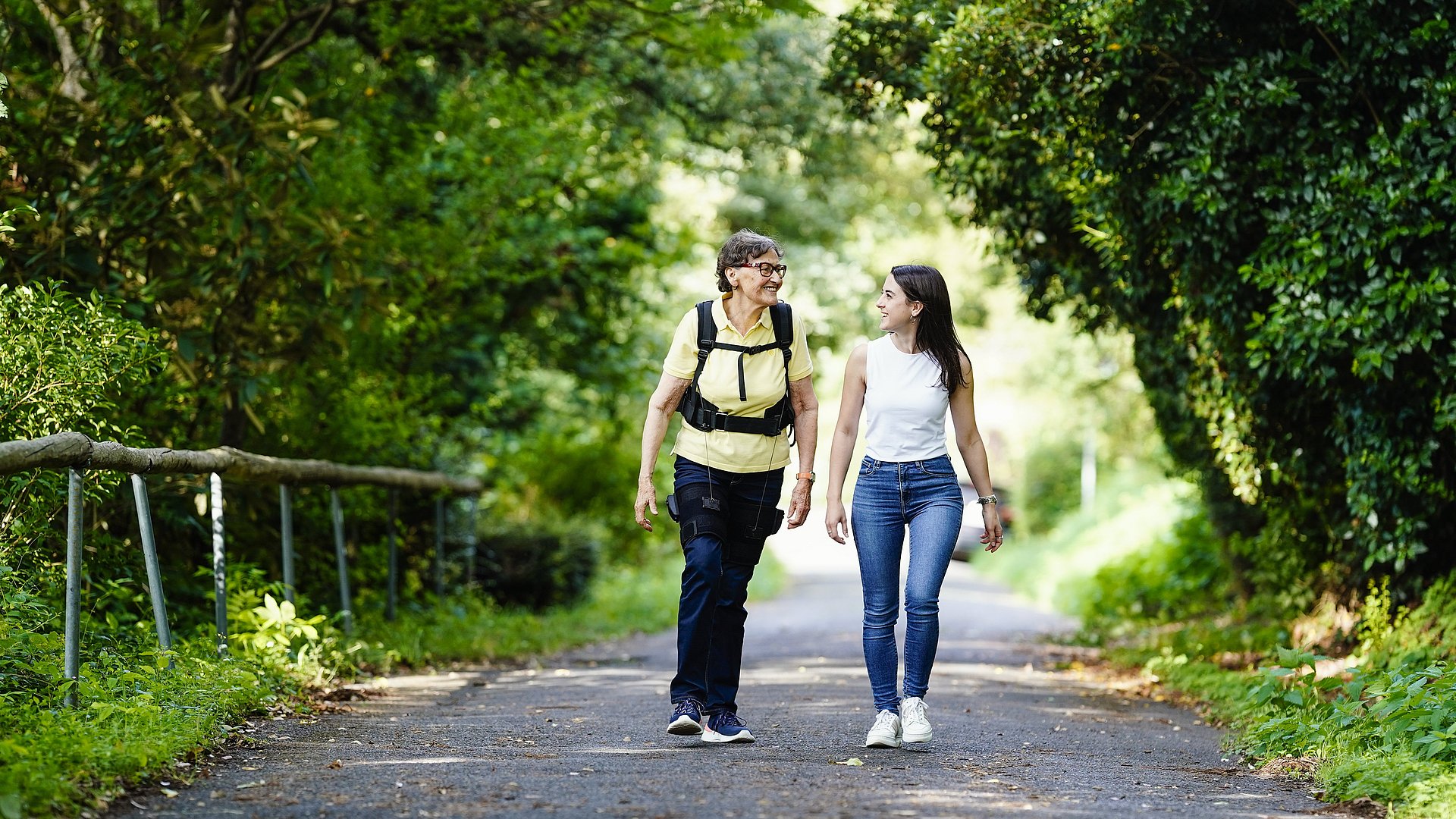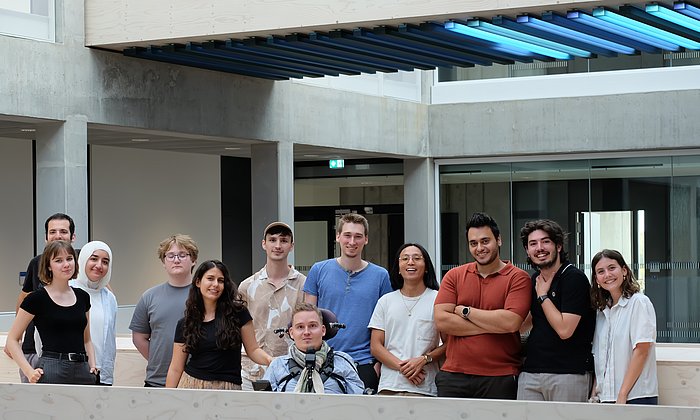TUM researchers develop shorts with motor power
Robotic shorts support people when walking

According to the researchers' analyses, when a young person walks 500 metres up a hill with the aid of the robotic trousers, the expended energy – known as the metabolic cost – is reduced by 18% as compared to unaided walking. For an older person walking 400 metres on level ground, it is reduced by more than 10%. This is comparable to the effects of a reduction in body weight of ten or six kilograms.
When doctoral student Enrica Tricomi transitions from standing to walking, two thin, artificial tendons extending from the thigh to a waist belt pull upwards at the same time and relieve the hip flexors of some of their load. A measuring device attached to the tendons determines the hip angle and velocity. The device sends a signal to the motors precisely at the transition to the swing phase of walking. Regardless of whether an older person or a sporty teenager is wearing the robotic shorts: “The system recognises how fast or slowly the person is moving, adapts to the respective weight of the legs and provides individual support accordingly,” explains the researcher. Her smart robotic shorts do not require any pre-settings and can be put on, ready to use, in just a few minutes: truly plug-and-play.
Health factor: especially beneficial for older people
A questionnaire completed by participants indicated a strong sense of control, with respondents awarding a mean rating of well over 6 on a seven-point scale from zero (no control possible) to seven (very good control possible). “It is particularly important for older people to feel safe,” says Masia, who believes his system is especially useful for people who are somewhat frail but do not yet need a rollator.
The professor, who has just moved from the University of Heidelberg to the Munich Institute of Robotics and Machine Intelligence (MIRMI) at TUM as Deputy Director, sees older people as well as those weakened by illness, for example with a weak heart or lung disease, as a target group for development. “Walking helps them to improve their metabolism, which in turn may have a positive effect on their illness,” says Masia. The fact that users can be out and about for longer makes them more mobile and independent overall. This in turn can have a positive impact on their quality of life.
Vision: developing exoskeletons for leisure time
In contrast to systems that are already available in outdoor shops as so-called exoskeletons, this is not a rigid frame, but a soft garment. “Our system looks more like clothing and is no bigger than a small rucksack overall,” says doctoral student Enrica Tricomi, who has gradually developed the system into its present form over the past four years. Prof Lorenzo Masia is convinced that in the future, a modular system will be created that users can put together themselves: “In a few years, you will buy a pair of shorts, attach a motor to them and plug in two cables. The system will then be ready to take you into the mountains.”
Enrica Tricomi, Francesco Missiroli, Michelle Xiloyannis, Nicola Lotti, Xiaohui Zhang, Marios Stefanakis, Maximilian Theisen, Jürgen Bauer, Clemens Becker, Lorenzo Masia; Soft robotic shorts improve outdoor walking efficiency in older adults; Nature Machine Intelligence, 2024; https://www.nature.com/articles/s42256-024-00894-8
The robotic trousers are ready to wear within a minute. TUM scientist Enrica Tricomi demonstrates in a video how to put them on and how it works: https://youtu.be/6Ns3oFUqzu0
Technical University of Munich
Corporate Communications Center
- Andreas Schmitz
- presse@tum.de
- Teamwebsite
Contacts to this article:
Prof. Lorenzo Masia
Deputy Director of Munich Institute of Robotics and Machine Intelligence (MIRMI)
Chair for Intelligent BioRobotics Systems
Technical University of Munich (TUM)
Lorenzo.masia@tum.de


